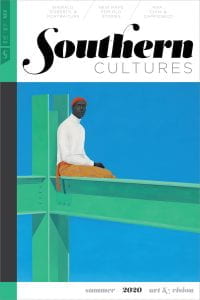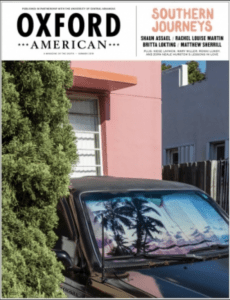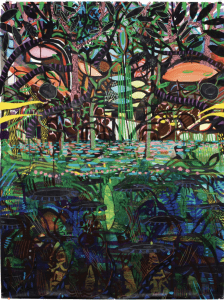The Southern Quarterly is a product of the University of Southern Mississippi, and is a scholarly journal centered around Southern arts and culture. It is published by The College of Arts and Sciences and is edited by an esteemed advisory board, featuring professors ranging from the University of Copenhagen to Duke University. Professors Karen Cox, William Dunlap, and Michael Kreyling are among the team of 16 who refine this journal into an overview of literature, paintings, theatre, and popular culture.
Since 1962, The Southern Quarterly has been educating on “studies of Southern culture informed by such disciplines as history, folklore, anthropology, political science, and social geography” (“The Southern Quarterly”). Their focus on “the South” extends beyond the state of Mississippi; the journal explores cultures across the region and down to the Caribbean. It even features interviews with major Southern writers, composers, and artists, as well as photo essays and poems. Frequently, they post a “Call for Papers,” and encourage scholars to submit articles for upcoming issues. Here, they give a brief overview of what the issue will concern itself with, for example: “This call for a special double issue of The Southern Quarterly solicits examinations of the Southern expatriate phenomenon from interdisciplinary scholars at any stage of their career” (The Southern Quarterly”). The Southern Quarterly encourages submissions from their students and writers, and requires thorough documentations, citations, and originality in all articles and creative pieces.
The Southern Quarterly is intended to inform scholars and students who are studying cultural aspects of the South. By inviting this audience to submit works, the journal publishes a variety of genres including articles, archival documents, original poetry, essays, interviews, and portfolios. The journal also provides a style and grammatical guideline that submissions must follow in order to be published. The volume information, table of contents, covers, and editor’s introductions are available to access online through The Southern Quarterly website, and an online subscription service is available for readers as well. The layout of most online downloadable Editor’s Introductions follow a traditional format, with images, footnotes, and a works cited page included. However, the full articles are not available to download from the website. Yearly subscriptions for electronic-o nly, print-only, or combined mediums can be made through their website.
nly, print-only, or combined mediums can be made through their website.
Some of their previous volumes address topics such as Sports in the South, Foodways in the South, The Carribean South, and Re-playing Gone With the Wind–Novel and Film. On the cover of each volume, an artwork pertaining to the topic is seen, such as a jar of Duke’s Mayonnaise painting on the front of the Foodways in the South edition. Some of the more popular editions include “Sports in the South,” which feature essays ranging from “The Life and Service of Zeke Bonura in the American Media,” by Willie Tubbs and Tony Mixon, to “Spreading the Gospel of Hoops: How Television Helped Make Atlantic Coast Conference Basketball a Cultural Fixture in the South.” This edition successfully captured the importance of sports in the South, and how the fandoms surrounding these events are as much of the game as the players themselves. Readers love the editions surrounding the Southern culture familiar to them; “Foodways in the South” became another highly successful edition of The Southern Quarterly, as readers were able to appreciate another staple of the southern lifestyle.
Overall, The Southern Quarterly is a timeless tribute to the rich culture of the South, featuring both academic and artistic ventures from the works of informed scholars and academics. Through the use of art, articles, poetry, literature, interviews, and primary sources, the journal has gained a reputable status and has established itself as a trustable source of Southern culture.
“The Southern Quarterly.” The Southern Quarterly | The University of Southern Mississippi, University of Southern Mississippi Libraries, aquila.usm.edu/soq/.





